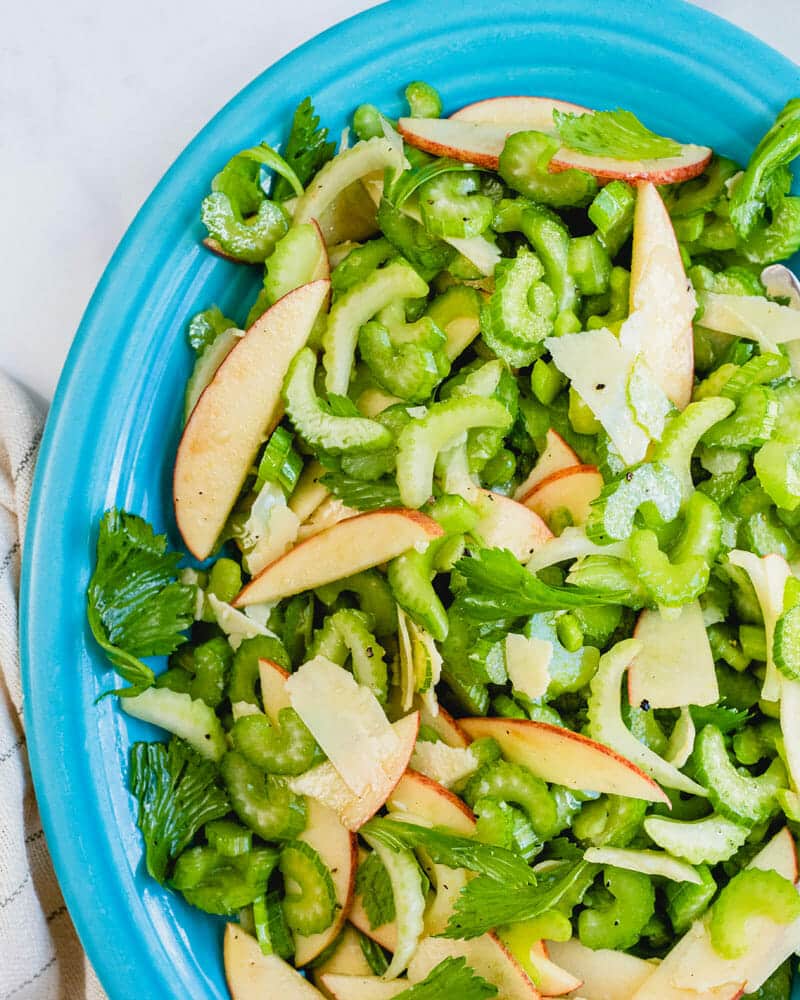Celery
Celery is a cultivated plant belonging to the species Apium graveolens in the family Apiaceae that has been used as a vegetable since ancient times. The original wild species has been selectively bred over centuries into three primary cultivar groups: stalk celery (Dulce Group), consumed for its fibrous edible stalks; leaf celery (Secalinum Group), grown for its aromatic leaves; and celeriac (Rapaceum Group), cultivated for its large, edible hypocotyl. Celery is characterized by its long, ribbed stalks, pinnate leaves, and small white flowers arranged in umbels. Celery is composed primarily of water (95%) but contains large amounts of vitamin K and negligible fat. The vegetable is commonly consumed raw in salads, cooked in soups and stews, or juiced. Celery seeds, which have a strong, aromatic flavor, are used as a spice or processed into celery salt. Celery is among a small group of foods that may provoke allergic reactions.
Source: Wikipedia
:max_bytes(150000):strip_icc()/3282037_chef-johns-waldorf-salad_chef-john-0a4dde90124f4a08ab090c9fe626798d.jpg)


